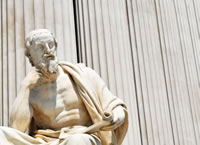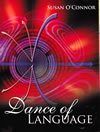Persuasive Writing
 In his iconic book Rhetoric, Aristotle tells us that the dialectic method finds the truth and rhetoric persuades for it.
In a court of law or in civic or judicial affairs, he knew that using certain devices and appeals would communicate his beliefs
in such a strong way that his audience would be persuaded to listen and follow his advice. The persuasive writing techniques in
Dance of Language
are the tools that can make a difference in how effectively you persuade an audience of one or of many to believe you.
In his iconic book Rhetoric, Aristotle tells us that the dialectic method finds the truth and rhetoric persuades for it.
In a court of law or in civic or judicial affairs, he knew that using certain devices and appeals would communicate his beliefs
in such a strong way that his audience would be persuaded to listen and follow his advice. The persuasive writing techniques in
Dance of Language
are the tools that can make a difference in how effectively you persuade an audience of one or of many to believe you.
Since Aristotle’s day, millions of speakers have used rhetorical devices and appeals that work effectively in persuasive speaking. Consider these examples of persuasive writing:
In 1775 Patrick Henry’s metaphor, “I have but one lamp by which my feet are guided and that is the lamp of experience,” convinced his fellow patriots to withdraw from England and form a new government.
In 1865 Abraham Lincoln’s second inaugural address alluded to the book of Matthew in the Bible when he spoke, “But let us judge not that we be not judged,” as the Civil War was coming to an end.
Franklin Delano Roosevelt’s vivid metaphor expressed this warning to a country on the brink of World War II: “We must especially beware of that small group of selfish men who would clip the wings of the American eagle in order to feather their own nests.”
In 1963, the year before President Johnson signed the Civil Rights Act, Martin Luther King employed the now famous anaphora, “I have a dream” eight times. In this groundbreaking speech can be found numerous rhetorical devices: metaphor, extended metaphor, allusion, antithesis, parallelism, and irony, as well as appeals of logos, ethos, and pathos. It is still one of the most frequently listened to speeches in the English language, for Reverend King’s words exemplify the art of rhetoric.
All of these speakers changed the lives of millions of people with their words, and the techniques that immortalized them can still work as effectively today.
 Once students understand the powerful tools available for persuading an audience, the task before them consists of researching a topic,
gathering information, organizing points and supporting details into a logical sequence, and developing several drafts.
The rhetorical appeals are the underpinnings of the content of the writing,
while the rhetorical devices enable the writer to structure the arguments most articulately and persuasively.
Once students understand the powerful tools available for persuading an audience, the task before them consists of researching a topic,
gathering information, organizing points and supporting details into a logical sequence, and developing several drafts.
The rhetorical appeals are the underpinnings of the content of the writing,
while the rhetorical devices enable the writer to structure the arguments most articulately and persuasively.
